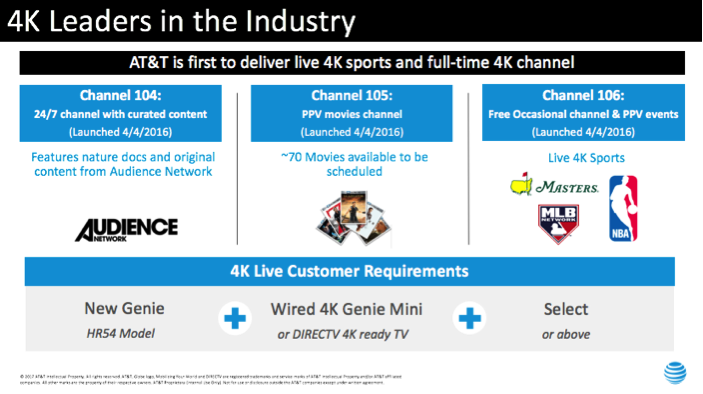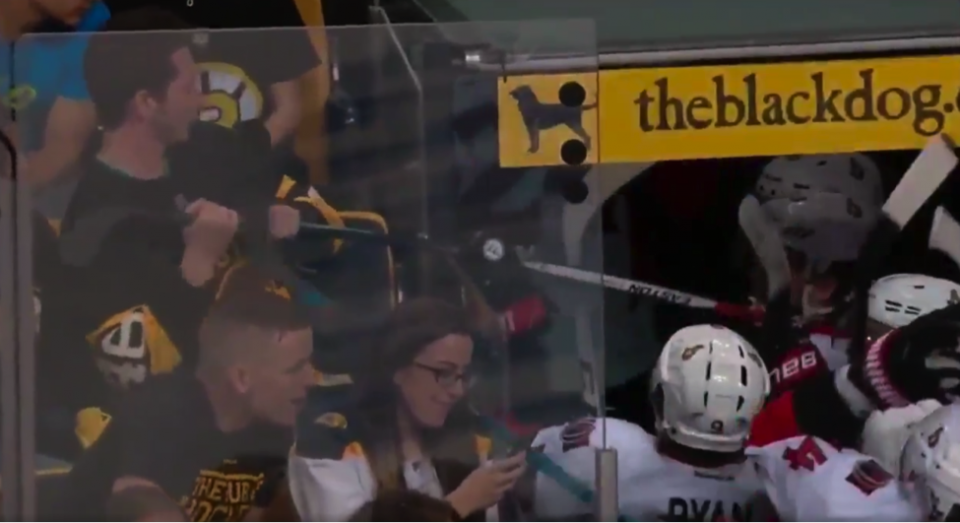High-End Real-time Editing, Social Video Among Next New Things
HIghlights of the NAB 2017 panel on the intersection of sports TV and social, mobile, OTT
Social media, mobile, and OTT have opened oceans of opportunity for TV. Of all the genres, live sports coverage has the best economic scaffolding to capitalize on it. The big events, team fandom, and well-run leagues stacked with savvy executives have turned sports into an endless source of cultural touchstones — all perfect for video exploitation.
The only thing needed? Techies who can ingest, tag, edit, repurpose, process, and publish the most exciting moments on the best platforms with the right business models — in real time.
That was the focus of the Sports Media & Entertainment panel at NAB 2016, discussing the relationship of sports TV and social media, mobile, and OTT. Here are some highlights of the conversation.
David Denenberg, SVP, NBA Entertainment, kicked things off by reacting to some growth numbers on the OTT/connected-TV front; February 2017 Nielsen data showed OTT TV viewing growing 50% year-over-year in January, to 9.6%.
“The big screen is a part of the mix,” he observed. “People are going to watch content anywhere anytime. My kids watch on their mobile devices. We want to make sure we’ve got our content out there, whether it’s highlights on social media, whether it’s our TV content on ESPN, ABC and Turner for the hard-core fan. We have NBA League Pass, which offers 1,000-plus games on any platform. Everybody talks about the new entrants in OTT. Well, we were one of the first on all the OTT platforms with our NBA League Pass.”
Asked how NBA Entertainment balances the monetary calculus between free highlights on social media — today, these are used to drive tune-in to TV — and the need to support exclusivity of content within OTT and pay-TV relationships, Denenberg responded, “It’s a constant balancing act. We want the highlights; if they’re going to be during the game, we want them driving people to watch the live game. That’s our number-one priority. We tell our teams to do that also with respect to their regional sports networks. Obviously, after the game, that’s a different story.”
Describing the role of automation in the creation of social-video content, he explained, “It used to take a couple of days, with a lot of loggers logging plays, editors clipping them together. Now it’s pretty much an automated process where you can get highlights of every player of every game pretty much real time. So you can envision what the possibilities might be, whether it’s your fantasy-sports team: you know, ‘Give me the highlights of all my players so I know how I’m doing.’ We’re only scratching the surface at this point.”
Elad Manishviz, chief business officer, sports and events, MX1 Global, weighed in, tying some concepts together: “I think highlights connect these two worlds of online and broadcast. People want to view live games on the biggest screens and highest resolutions, but they can’t always do that, so [they watch] on their mobile devices, on the go, when they can’t be in front of the big screen. For me, that’s where these highlights experiences are the connector between the two worlds.”
He also described MX1 Global’s platform as agnostic to the specialized technologies in this domain. “We can integrate all the platforms that are working on automated highlights and other specialized technologies, and that allows us to help customers test which are the best models and use cases. Each sport is different, with different capabilities.”
Illustrating the point further, John Ward II, SVP, AT&T Entertainment Group, who runs the DirecTV NFL Sunday Ticket and RedZone content operation, talked about his company’s pioneering work investing in and then acquiring a company called Liveclips, which supports content workflows for DirecTV’s NFL Sunday Ticket.
“In 2013, at a Sports Video Group meeting,” he recalled, “Liveclips pitched us on their highlight automation. [DirecTV CTO] Rolumo Pontual was really taken with it; we took a stake in the company in 2013 with a right to purchase it. Shortcuts was a product we offered from day one on RedZone, with protection against the broadcast window. We stopped broadcasting those linear programs recently. Now you can pick players to watch. And there are editors curating great playlists.”
Ward also recounted some of the history behind RedZone: “[Fox Sports exec Eric) Shanks was living at one point in Italy, over there to get Sky Italia started, and he came up with the idea around soccer matches: what if you could sort of bounce around from game to game in both live coverage and highlight action? It was new and interesting. We knew it would be a great premium add-on to the Sunday Ticket. The idea was, for the avid football fan, with RedZone, you don’t even need the remote control.”
All of these ancillary content opportunities still play second fiddle to something pay-TV subscribers have come to expect: the best-possible picture quality and resolution. Ward provided an update on AT&T’s leadership as the very first to deliver live 4K sports and a full-time 24×7 4K linear channel.
With social media, OTT, and mobile expanding sports TV, including 4K HDR, social-media teams are becoming integrated into the frontline of content creation, the production truck.
Matt Schnider, VP, digital production, Fox Sports, outlined the elevated roles of social and digital producers. (In 2016, he was instrumental in building a social-TV experience that won an Emmy.)
“For us, digital and social are just extensions of linear,” he said. “We have directors, managers, producers, and editors working very closely with the linear team in the trucks, in the studios. On the product side, we’ve got SnappyTV; we’re working mobile and desktop. It’s amazing how much the space has evolved in the past few years. If you look at what’s next, I think the next stage is going to be higher-end editing in real time.”
He shared some impressive results from the 2016 World Series broadcasts. Fox Sports published triple the video on its Twitter profile for the event, causing video views to grow 534% from 2015, to 1.25 million views. On Facebook, video views were up 202% to 15.5 million. Engagement on those videos was also up a whopping 621% to 629,000, with 2.5 million views on pregame Facebook live streams.
“We had access to the entire camera pool in our truck,” Schnider pointed out. “We had three of us packed into this tiny space for 1½ people, next to the robocam operators, and were able to go live before and after every game: batting practice, live reacts, on Facebook, on Go as well.
“Where and when is a strategic issue,” he continued. “Sometimes, it’s a question of monetization, sometimes it’s about engagement. We may want to promote a new product; we want to promote the linear event as well. But, bottom line, it’s been deep, because the engagement — which you’re showing on the screen — the numbers have been pretty surreal.”
The picture he painted was that of a flood of video content, professionally created, curated, and edited by digital and linear teams working closely together.
Then FileCatalyst CEO Chris Bailey took the conversation global. His company has won two Emmy Awards for accelerated–file-transfer technology, including work for the NBC Olympics team at the 2014Sochi Winter Games. He talked about remote production and real-time editing workflows in the context of the industry’s broader move toward object and near-line storage.
“NBC Sports came to us a year in a half in advance of Sochi,” he reported. “We ran a pilot where we mirrored an Avid in Sochi and Stamford; they had to encode and transfer files immediately so the editors could instantly access the clips and send finals back to Sochi. There are all these events that they can’t broadcast on live TV due to the constraints of the linear schedule. We were able to help them with materials and clips packaged up for social and OTT platforms. They really geared up for this at Sochi.”
After describing how NBC Sports remotely packaged social content in real time, Bailey tackled the opposite workflow: searching and retrieving content from remote archives and bringing it onsite to be incorporated into the main broadcast.
“What’s interesting,” he said, “it’s not just sending clips from linear to online. It’s also about accessing remote content archives [from] onsite for use in the live broadcast. An example is with Michael Phelps: NBC knew they would want the capability to search for historical Phelps footage. But do you want to take a massive storage array to Rio?
“Or what about other examples, where you can’t predict?” he continued. “Last week, I was watching the NHL Playoffs as a [Boston] Bruin fan tried to swipe [Ottawa Senator] Erik Karlsson’s hockey stick. Something like that [would be] a great clip. You never know what you might find in a search through historical footage. Maybe you’ll have a top-10 list out of that, or all kinds of fun stuff.”


